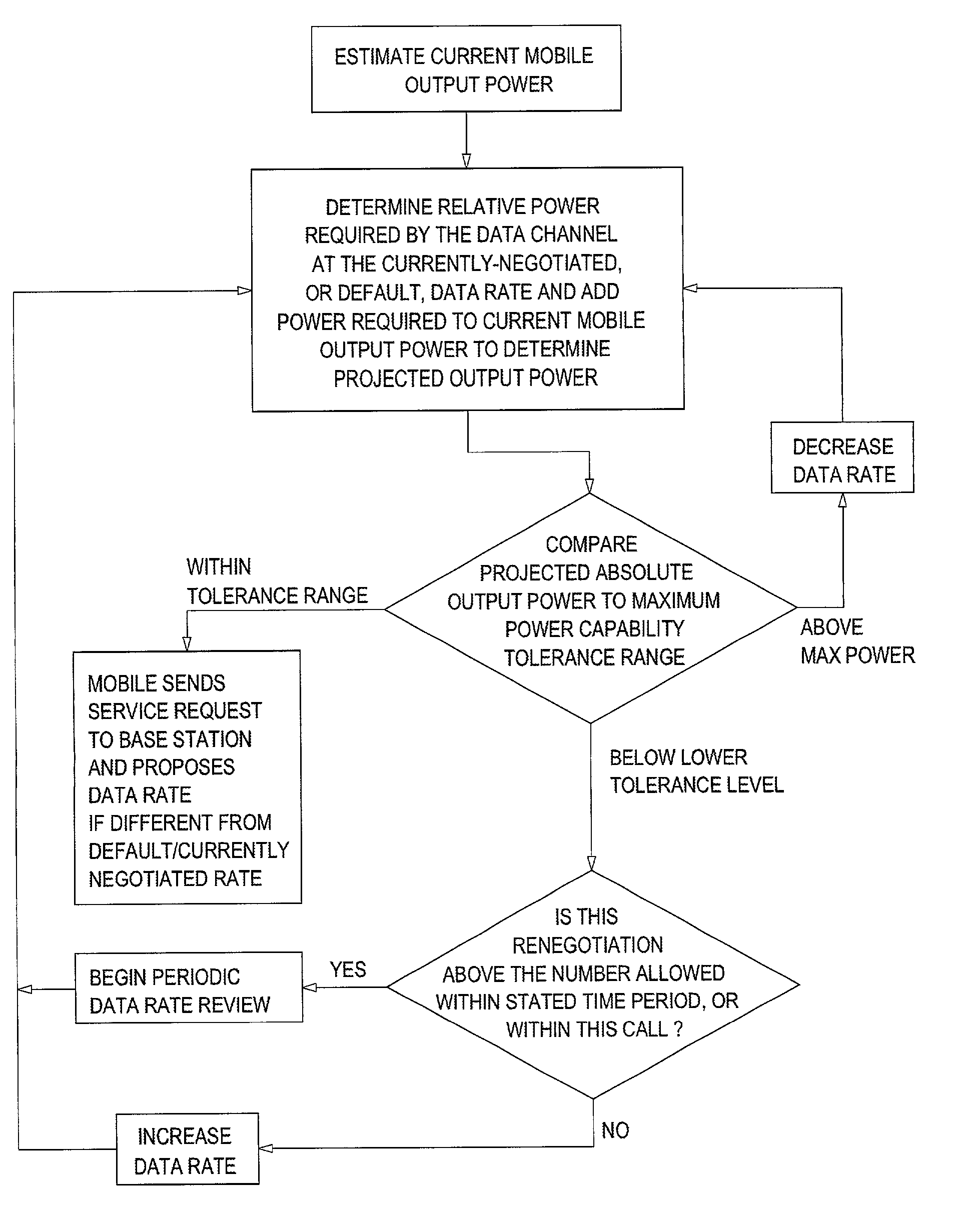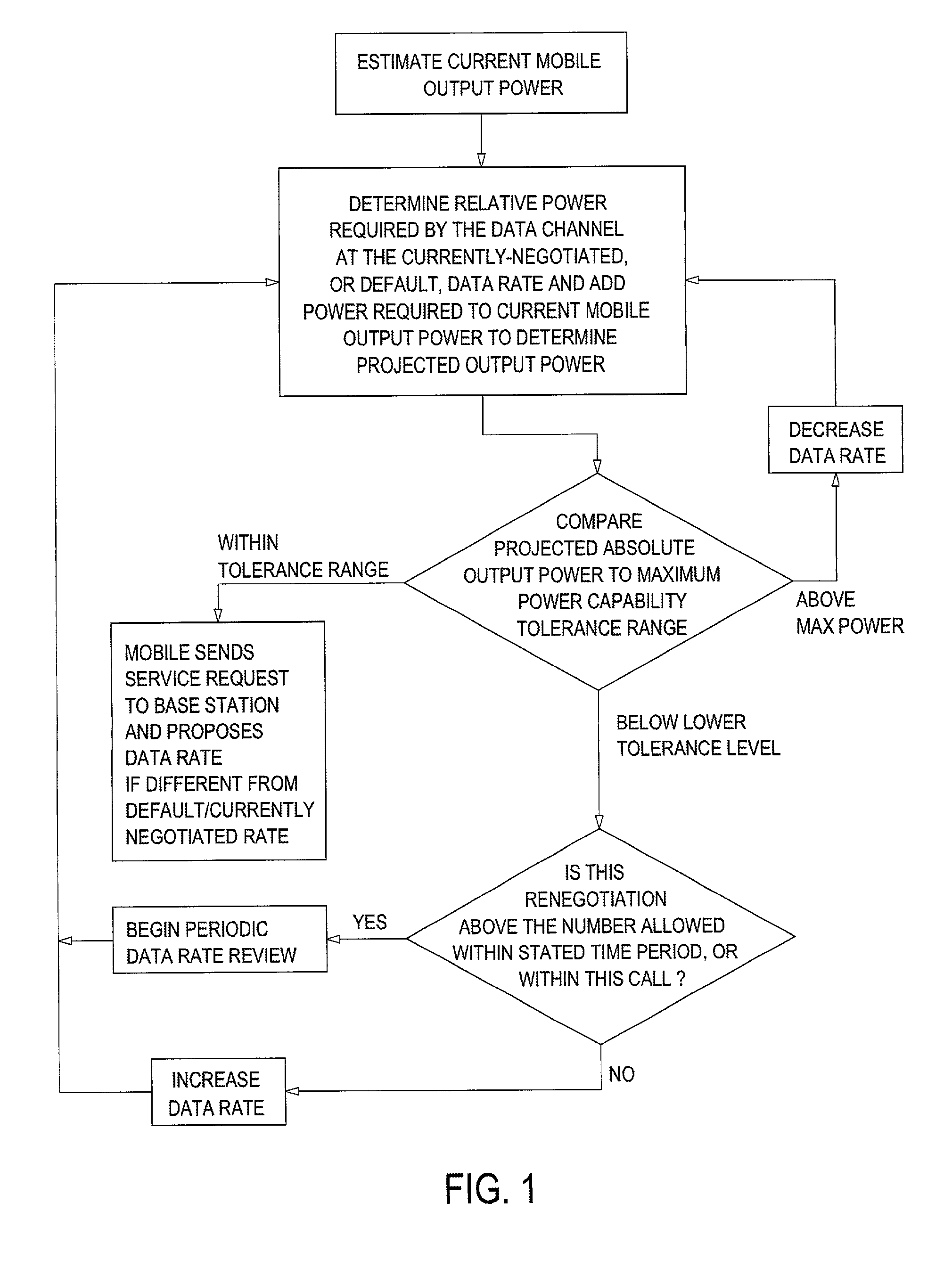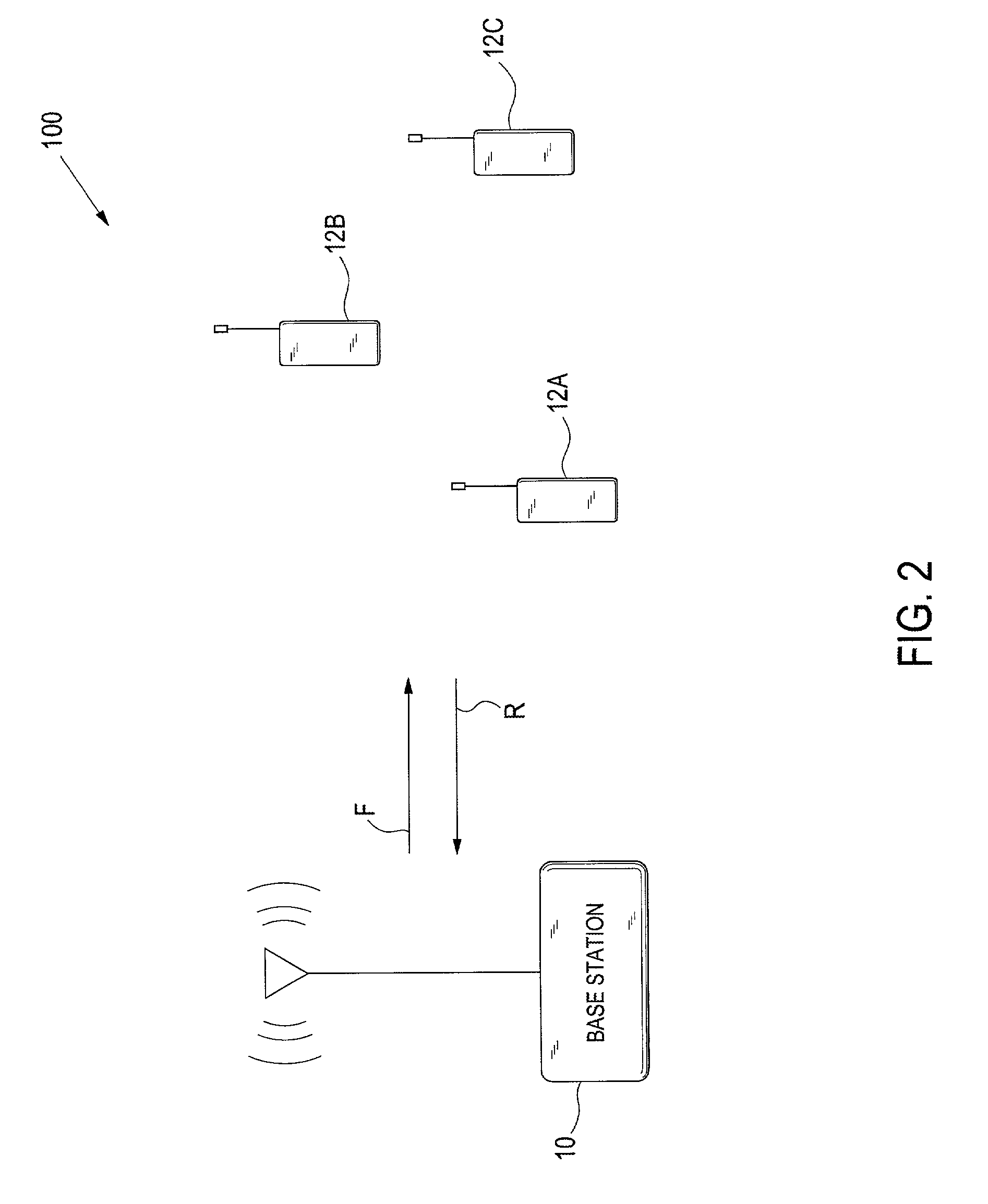Method and apparatus for assigning data rate in a multichannel communication system
- Summary
- Abstract
- Description
- Claims
- Application Information
AI Technical Summary
Problems solved by technology
Method used
Image
Examples
Embodiment Construction
)
[0034] The present invention addresses the problem of exceeding the maximum mobile transmitter output power and potentially losing connection to the base station in CDMA systems having multiple channels in the reverse link when low processing gain channels are brought online in addition to other channels. The invention is a method and apparatus for negotiating the maximum possible data transmission rate for a low processing gain channel. The mobile proposes a data rate to the base station receiver based upon available mobile transmitter output power.
[0035] Current mobile units complying with IS-95 standards can be calibrated to limit the maximum allowable mobile transmitter output power based solely upon the usable linear portion of the mobile RF power amplifier. FIG. 5 is a block diagram of the CDMA mobile structure within which a data rate control method may be implemented. The maximum output power limit is presented to processor 22 within the mobile as a digital value in memory ...
PUM
 Login to View More
Login to View More Abstract
Description
Claims
Application Information
 Login to View More
Login to View More - Generate Ideas
- Intellectual Property
- Life Sciences
- Materials
- Tech Scout
- Unparalleled Data Quality
- Higher Quality Content
- 60% Fewer Hallucinations
Browse by: Latest US Patents, China's latest patents, Technical Efficacy Thesaurus, Application Domain, Technology Topic, Popular Technical Reports.
© 2025 PatSnap. All rights reserved.Legal|Privacy policy|Modern Slavery Act Transparency Statement|Sitemap|About US| Contact US: help@patsnap.com



